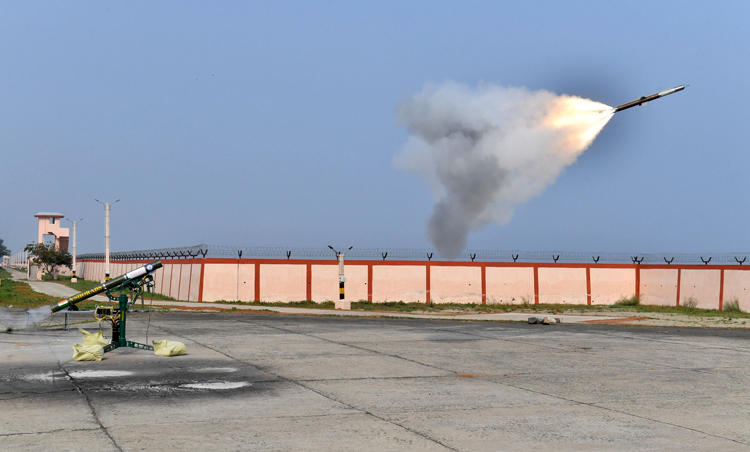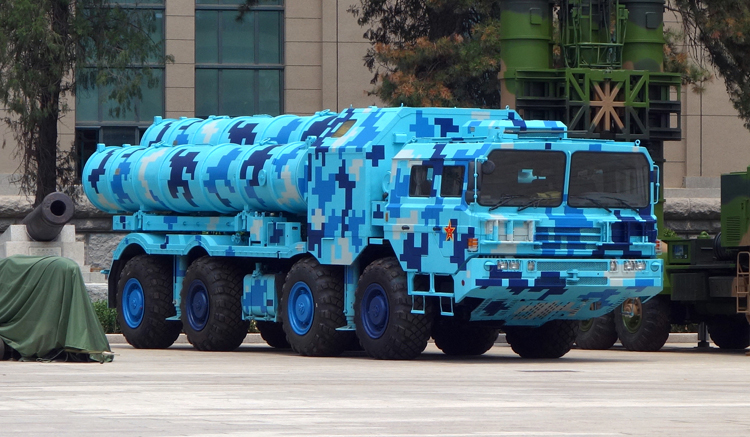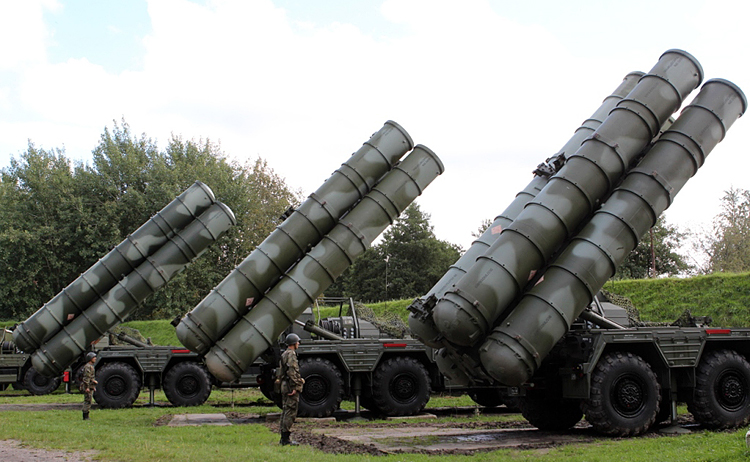INDIAN ARMED FORCES CHIEFS ON OUR RELENTLESS AND FOCUSED PUBLISHING EFFORTS

The insightful articles, inspiring narrations and analytical perspectives presented by the Editorial Team, establish an alluring connect with the reader. My compliments and best wishes to SP Guide Publications.

"Over the past 60 years, the growth of SP Guide Publications has mirrored the rising stature of Indian Navy. Its well-researched and informative magazines on Defence and Aerospace sector have served to shape an educated opinion of our military personnel, policy makers and the public alike. I wish SP's Publication team continued success, fair winds and following seas in all future endeavour!"

Since, its inception in 1964, SP Guide Publications has consistently demonstrated commitment to high-quality journalism in the aerospace and defence sectors, earning a well-deserved reputation as Asia's largest media house in this domain. I wish SP Guide Publications continued success in its pursuit of excellence.
Reviewing Air Defence
Iran's aerial strike on Israel unveils global air defence realities and vulnerabilities
 |
The Author is Former Director General of Information Systems and A Special Forces Veteran, Indian Army |

Iran's retaliatory strike on Israel on the night of April 13-14, 12 days after Israel struck Iran's consulate in Damascus, Syria, killing two senior Iranian military commanders, made the world sit up. Iran fired 300 ballistic missiles and drones in three waves. Israel claimed 99 per cent of these were destroyed. It later emerged that interception was mainly done by the US and UK.
But the fact is that Iran's nine hypersonic missiles could not be intercepted by Israel's Iron Dome air defence system, as well as by the US and the UK. The Israel-based news website Ynet News, in contact with IDF sources, estimated that intercepting the Iranian missiles cost Israel more than $1 billion on that single night. Israel's claim of no damage caused by Iranian strikes was negated by 'Hebrew Daily', an Israeli publication, which showed Iran hit three IDF air bases at Nevatim, Ramon and Hermon, causing considerable damage and disrupting air operations.
Iran's nine hypersonic missiles could not be intercepted by Israel's Iron Dome air defence system, as well as by the US and the UK
Iran had obviously taken into consideration ballistic missile defence systems of both Israel and the US which were deployed in and around Israel at the time of the attack. Interestingly, the IDF airbases of Ramon and Nevatim are under the protective umbrella of the Israeli-US missile defence shield. By defeating the US-Israeli missile defence shield, Iran has exposed the myth of US missile defence supremacy that serves at the heart of US force protection models used when projecting military power on a global scale. The Iranian success would have set European countries thinking how secure they are depending on such a redundant US defence system?

Incidentally, an Iranian security official revealed that the US had contacted Iran to allow Israel "a symbolic strike on Iran to save face" after Iran's retaliatory drone and missile barrage on night April 13-14, asking Iran not to retaliate. However, Tehran rejected the proposal and reiterated warnings that any Israeli attack on Iranian soil would be met with a decisive and immediate response.
In terms of hypersonic weapons, China and Russia lead the world in developing, testing and deploying hypersonic weapons. Russia's RS-28 'Sarmat' hypersonic, with a maximum range of up to 18,000 km, is designed to carry a variety of warheads and penetrate any existing or prospective missile defence systems.
By defeating the US-Israeli missile defence shield, Iran has exposed the myth of US missile defence supremacy
While the US is still in the testing stage of hypersonic missiles, having spent $12 billion already, Chinese strides in the hypersonic field are a manifestation of its broader strategic intentions and underscore its drive toward technological and military pre-eminence. Though having subsonic speed of Mach 0.9, China's YJ-62 is a turbojet-powered medium-range, anti-ship missile that can be launched from air, land or sea, having a maximum range of 500 km, carriage capacity of 450 kg high-explosive armor-piercing warheads, and maximum subsonic speed of Mach 0.9.


China's DF-ZF hypersonic missile is thought to reach speeds between Mach 5 and Mach 10. Notably, the hypersonic weapon Beijing launched over the South China Sea in September 2023 traveled at speeds of more than 24,000 km an hour as it circled the globe. Flying at least 20 times the speed of sound, it could reach anywhere on earth in less than an hour.
India's Ballistic Missile Defence (BMD) programme, launched in 2000 after the Kargil War, aims to create an air defence shield against all types of hostile missiles, including nuclear warheads. Also, India had conducted its first successful anti-satellite (ASAT) test, under Mission Shakti, in March 2019. Project 'Kusha' by the Defence Research and Development Organisation (DRDO) aims to develop a long-range air defence system for Indian Air Force (IAF) to detect and destroy enemy projectiles and armour, including cruise missiles, stealth fighter jets and drones at ranges of up to 350 km – deployment targeted for 2028-2029.
India's Ballistic Missile Defence (BMD) programme aims to create an air defence shield against all types of hostile missiles, including nuclear warheads

India's surface-to-air missile (SAM) system 'Akash', which can engage four aerial targets over a range of 25 km has been exported to Armenia and many nations in South America, Africa and Asia have shown interest in it. Also, India and Israel Aerospace Industries (IAI) have jointly developed the Medium Range Surface-to-Air Missile (MRSAM), having 70-km range, capable of neutralising enemy aerial threats; like missiles, aircraft, helicopters and guided bombs. The MRSAM has variants for the Army, Navy, and the Air Force.
India has joined the elite group of nations having multiple independently targetable re-entry vehicle (MIRV) capabilities
The Indian Army recently received the first batch of 24 Russian-made Igla-S Man Portable Air Defence Systems (MANPADS), along with 100 missiles. Concurrently, the DRDO is reportedly in the advanced stages of developing an indigenous MANPADS. The Indian military is also working on the LBRG (Laser Beam Rider Guidance) System. Most importantly, the IAF has acquired from Russia the S-400 Triumf air defence system from Russia; recognised as the world's most-advanced air defence system. Russia has also indicated that the S-500 air defence system would also be available for purchase by India.

We may claim that the country already possesses a robust air defence mechanism and is in the process of indigenising it completely. There is no doubt that the military hierarchy is continuously evaluating and enhancing the air defence capabilities to ensure India's national security. Also, India has joined the elite group of nations having multiple independently targetable reentry vehicle (MIRV) capabilities. However, the bottom line is that Iran's successful strike on Israel has magnified the air threat to India in the backdrop of China's advanced hypersonic capabilities. One may say that other nations also don't possess adequate defence against the hypersonic. But the better way would be to concentrate total national effort, with or without foreign collaboration, to develop a robust air defence system that can defend against the hypersonic.





